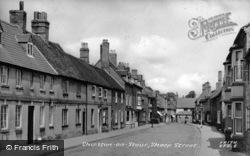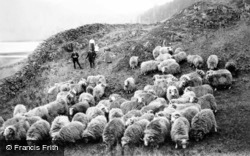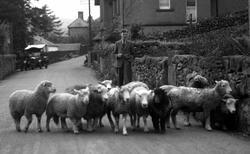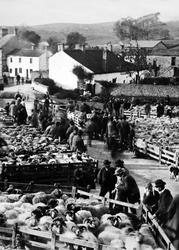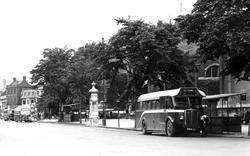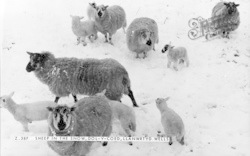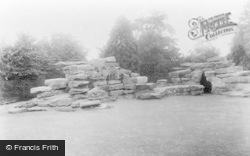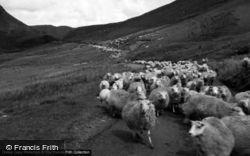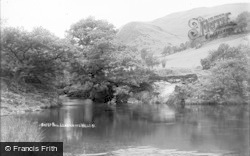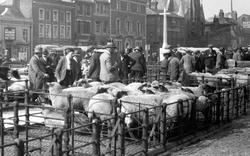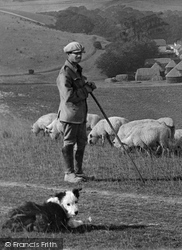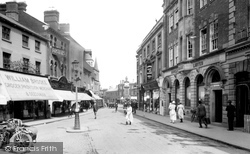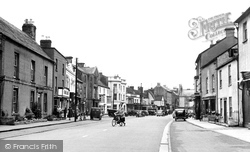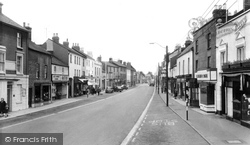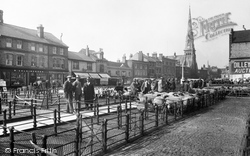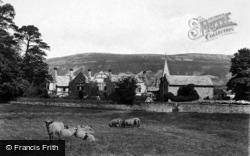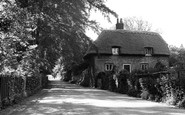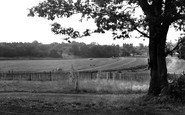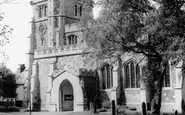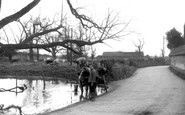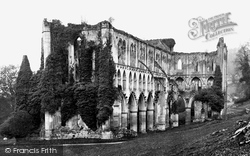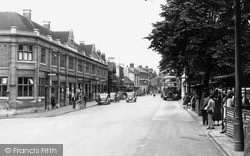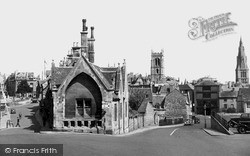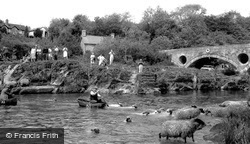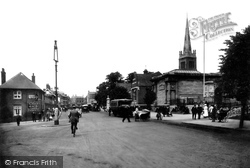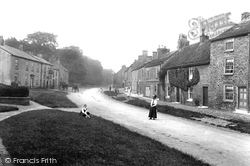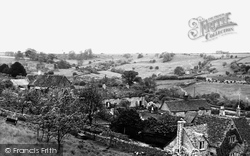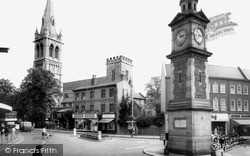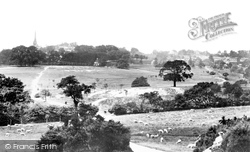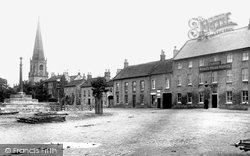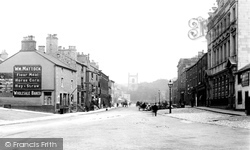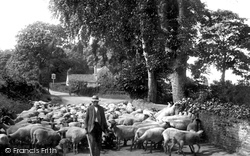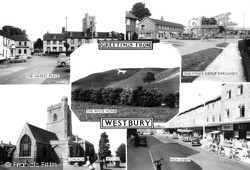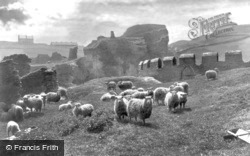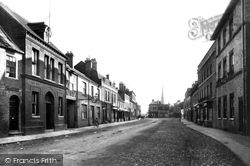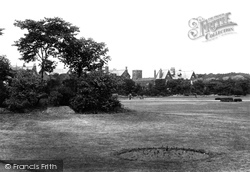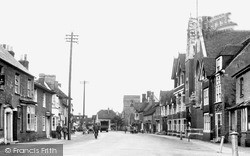Places
1 places found.
Those places high-lighted have photos. All locations may have maps, books and memories.
Photos
217 photos found. Showing results 141 to 160.
Maps
38 maps found.
Books
Sorry, no books were found that related to your search.
Memories
226 memories found. Showing results 71 to 80.
Village And Our House Shotover Burley Woodhead.
Burley Woodhead. We lived in Shotover from my birth in 1942 until approx 1957. My parents moved into the house and the village 1939. When my brother Roger was born in Bingley in 1946 I ...Read more
A memory of Burley in Wharfedale in 1950 by
Happy Daze, Happy Holidaze
My memories take me back to South Bragar as a young boy of 9. My father, Angus Murray, born in No.30 moved to Glasgow many years before. But then and till this day I still go back with my family and tell them probably ...Read more
A memory of South Uist in 1972 by
Visits To Grandma In Alfred Street,Abertwysswg.
Well, the sixties and early seventies, really. We used to have a holiday with grandparents George and Ethel Hind. The house had been in the family for some years from Grandma's side, the Jones' - I ...Read more
A memory of Ebbw Vale in 1967 by
Beautiful In All Seasons
This road, as the word Brook Street most clearly implies, leads down from the Cross in the distance at the top of the hill down through this avenue of trees to the Lynch. On the left are some beautiful houses with lawns and ...Read more
A memory of Eastry by
Those Were The Days
I was born in Straight Road Harold Hill in 1943 and in 1947 we moved into the Prefabs across the road to Holly Road which was just off Briar Road, these Prefabs which I believe were errected by German Prisoners of war were ...Read more
A memory of Harold Hill in 1950 by
Historic Brands
I cant quite make out where this picture was taken from but it is earlier than 1960. I first went to `BRANDS`in 1956 with my Dad & brother but went on a regular basis with friends from `57 onward.Safety measures ...Read more
A memory of Brands Hatch Circuit in 1957 by
My Visit To Tring
Hi When I was about 10 years old and my younger brother was 9, we went on a holiday to Tring for under privileged children around 1962. It was arranged by the CCHF We stayed in a Bungalow, owned by Mr. and Mrs. Atkins and they had a ...Read more
A memory of Tring by
Chime Cottage
We bought an old cottage, a semi-detached one, in Hildersham, then named Bermuda Cottage. We were not aware of the origins of the name, but the owner, an elderly lady owned a bald parrot, probably bald due to boredom as parrots are ...Read more
A memory of Hildersham by
Growing Up In Handley
My family moved to Handley in 1947 and I spent the rest of my childhood there. Our family name is Harris and my parents were Drs Paul and Zoe , they had five children. We lived off the road to Deanland. I never could ...Read more
A memory of Sixpenny Handley in 1950 by
Letter To Darling
Dear Herbie, You tell me so many great stories. I'd like to tell you one. On our way to Thirsk that day in 1990, Molly, Cassie and I spotted a castle tweaking our curiosity. We bumped over a 2 track path winding around and up ...Read more
A memory of Bottesford in 1990 by
Captions
200 captions found. Showing results 169 to 192.
As well as leading their spiritual life, they were also shrewd businessmen, managing huge sheep flocks for the wool trade, and involving themselves in iron smelting, glass production and leather tanning
It was a sheep-cropped sward well into the 1920s, but the Council then covered it in bowling greens, high hedges and municipal gardens. Francis Frith's Sussex A Century Ago
This view of busy Sheep Street shows patient bus passengers corralled into queues by solid metal barriers. On the left the parade of Piccadilly Buildings ends with the George Hotel.
Both Sheep Market and All Saints Street lead down to what was the Great North Road, but Stamford has since been bypassed. The town bus station is on the right, on the site of Stamford Castle.
, is set in a spectacular gorge with a number of waterfalls, and is famous as one of the last places in Britain where licensed coracles were used, both for salmon fishing and (as we see in this view) sheep
This busy junction, uniting five roads, including Northampton Road and Sheep Street, was lit by a single, central lamp post.
Findon is on the top of the Downs, just north of Worthing, and was noted for an annual sheep fair. Now horse breeding and training is an important local activity.
At the furthest end of the village is a fountain (1897) and the remains of the pinfold for stray sheep. The village still has a working blacksmith.
In the hey- day of the woollen industry, shepherds and their families came from Wales to live here and tend sheep in the surrounding countryside.
High Street and Sheep Street are now shopper-friendly, pedestrianised areas with trees and raised flowerbeds, reproduction Victorian lampposts, bench seating and wrought iron bus shelters.
The photograph contrasts fenced and hedged sheep pastures with visual echoes of heathland.
At one time 40,000 sheep could be traded in one day. Richmond complained about the competition, because Masham's market was always free of tolls.
Skipton was a centre for sheep and cattle rearing, as we can see from this busy market day scene.
Since the photograph was taken, there have been changes along the approach to Sheep Market: the building with the mansard roof, end on to the photographer, has been replaced with an incongruous group of
Skipton was a centre for sheep and cattle rearing, as we can see from this busy market day scene.
His sheep have just been sheared, and are watched over by his dog in the foreground.
The economic growth of the town and district has depended over the centuries on agriculture, especially sheep farming, the wool trade, glove-making and leather work, iron work, and cement production
This destruction of a town or village was not infrequent in this period of history; landowners wanted more land to turn into grazing ground for sheep, as wool was extremely valuable at this time.
Here (33595a), the ragged clouds and the sheep shining in the stormy light combine to create a fanciful, romantic scene.
This destruction of a town or village was not infrequent in this period of history; landowners wanted more land to turn into grazing ground for sheep, as wool was extremely valuable at this time.
The market was closed in October 1886 and trade moved to join the Sheep Market, which was already well established in Market Hill.
As far back as 1861, when sheep were grazing on Hungry Moor, it was laid down that the moor was to be kept open and never built upon.
Shefford is a corruption of Sheep Ford - possibly the title bestowed by herders as they moved their flocks across the River Ivel at this point to stay ahead of Danish invaders.
Formerly part of a large, open and periodically flooded area, shared for centuries as common land by Flitton and Maulden parishes, Flitton Moor was used as common rough grazing for sheep, cattle and geese
Places (1)
Photos (217)
Memories (226)
Books (0)
Maps (38)


